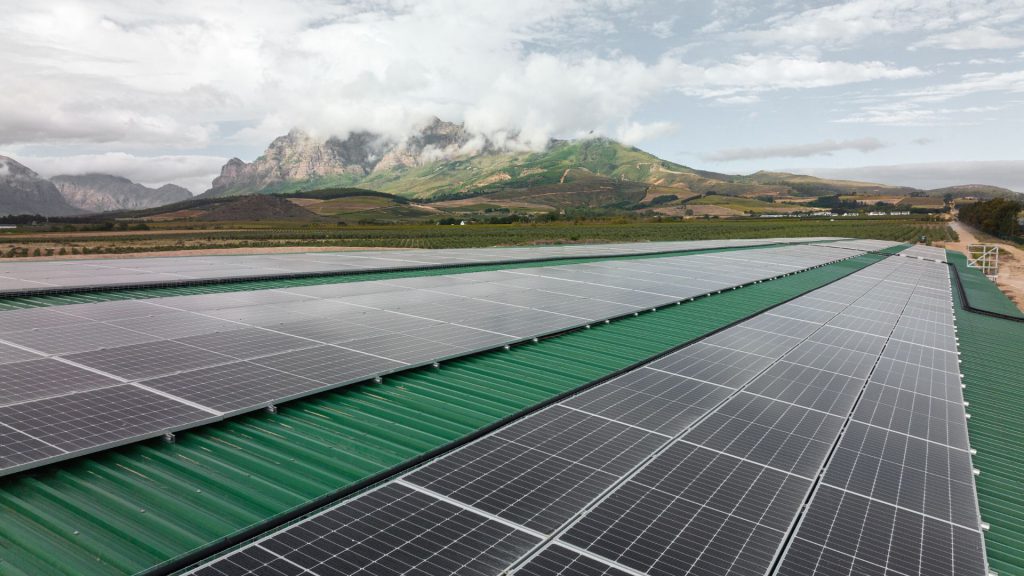
Restaurants
Spa
Day Visits
Shop
Functions
16°C
July 13th, 2022
“Beeeep!” That comforting sound when the microwave lets you know that the power is back on after two and a half hours of waiting. Eish, loadshedding …

South Africans have become accustomed to the frustrations of scheduled power failure. And while it’s certainly an annoyance, the more significant issue is undoubtedly our reliance on non-renewable power resources for everyday life. So, in the spirit of sustainability and always aiming to do better at Babylonstoren, we’ve opted for the “boer maak ‘n plan” approach.
Visitors driving along the Klapmuts/Babylonstoren Road will notice a new glimmering beacon on the roof of our Vlaktestoor where we’ve installed a 1056 m2 solar field to power all operations in this facility. The 528 panels generate 240 kilowatt peak (kWp) – more than enough for all the energy needs of Vlaktestoor.
According to Babylonstoren’s industrial engineer, Ebert Otto, the ultimate plan is to ramp up the solar energy output to close to 1 mVA, which will provide sustainable power for most operations on the farm. “The farm in its entirety currently uses between 600 kVA and 1200 kVA,” Ebert says. “So the plan is to increase the existing photovoltaic* (PV) capacity by more than three times over the next few years.”
The solar panels on Vlaktestoor are the start of this process. This important facility will soon be the home of our entire winemaking and bottling plant for white wine and is also where many of the non-perishable items made on Babylonstoren are stored. All our daily distribution for online purchases also takes place from Vlaktestoor.
For now, the objective of the new solar system is to secure a reliable and sustainable energy source for this key operations zone.
Switching to solar also forms part of the future plan at Babylonstoren. “The change will save us financially in the long run whilst providing our guests with uninterrupted energy, which will be harnessed sustainably from the abundant southern African sun,” Ebert says. In addition, the solar plant will also be able to help relieve some of the pressure on the struggling national grid. “We currently feed excess solar energy back to the national grid, assisting the country with its current power crisis, 1 kWh at a time,” Ebert says. “The same cable that currently feeds Vlaktestoor with energy from the national grid is able to return power to the source from our solar energy system. It works as a two-way street.”
South Africa is one of the best candidates globally for solar power with an annual 24-hour global solar radiation average of about 220 watt per square metre (W/m2). Our southern African location offers enough sunshine all year round and most areas in South Africa average more than 2500 hours of sunshine per year. This translates to average solar radiation levels of between 4500 and 6500 W/m2 in one day. Compared to the United States, which averages about 150 W/m2, and most of Europe and the United Kingdom, coming in at about 100 W/m2, South Africa’s sunny resource is one of the highest in the world.

*Photovoltaic (PV) refers to the materials and devices used to convert sunlight into electrical energy.